Haworthia Limifolia (Fairy Washboard) Profile
Written by Iris
Oct 22 2021
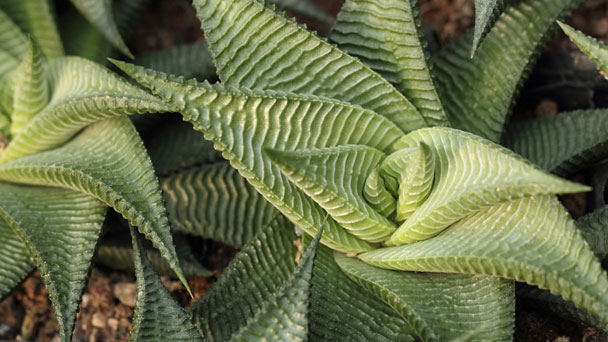
Haworthia Limifolia (Fairy Washboard) is an attractive succulent with triangular green leaves arranged in rosettes. The leaves of Haworthia Limifolia have white ridges with pointed tips. Haworthia Limifolia is fairly simple to grow in a garden or container and is a popular houseplant.
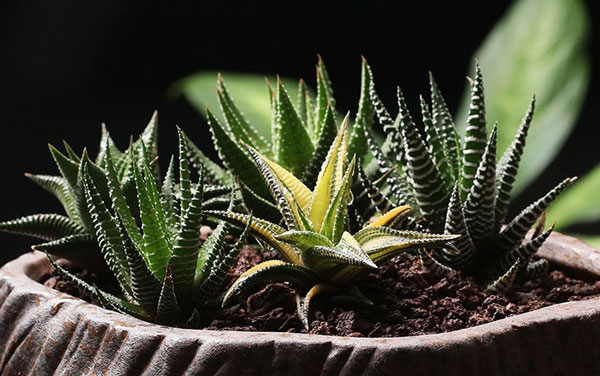
Haworthia Limifolia is an easy-to-grow plant, and it can be planted anywhere outside its natural habitat. This adaptability of this plant makes it one of the most grown succulent plants. Thick leaves of the Haworthia Limifolia plant help it survive through the drought condition. Also, it can survive in partially low light (indoor condition) conditions as well. This makes the Haworthia Limifolia plant a very suitable choice for indoor decoration. It has a very small size, and you can keep it on your tables. It is a flowering succulent, which means it will produce tiny flowers during the blooming season. So, you will not just get a plant with beautiful leaves, but also a flowering plant.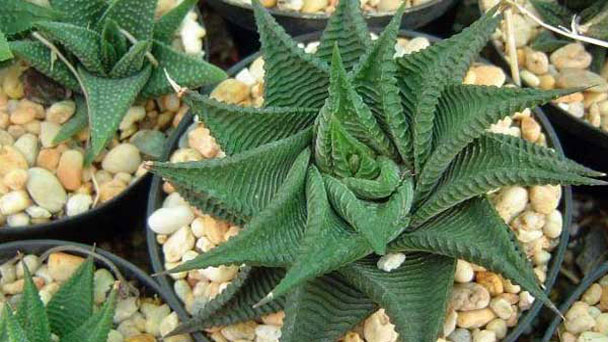
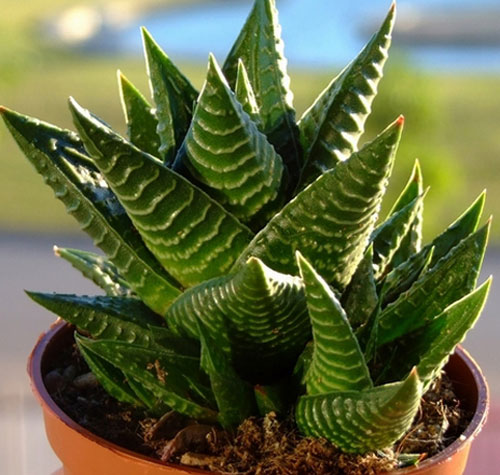
Haworthia Limifolia type is a slow grower so even if it can be propagated by its seeds, this method is not recommended. To propagate haworthia Limifoliafrom the seeds, plant the seeds in a well-draining soil mixture. This method can be used outdoors. In cooler areas, indoor propagating is recommended.
Haworthia Limifolia Propagation with Stem Cuttings
When propagating haworthia Limifolia from cuttings, cut a leaf from the mother plant carefully with a clean knife or scissors. Before replanting, wait for a few days to allow it to callous. Use well-draining soil for your new Haworthia Limifolia plant. Don’t forget to water when the soil dries out.
Haworthia Limifolia Propagation with Offsets
Haworthia Limifolia can be propagated at repotting time using offsets from the mother plant when it becomes crowded. When taking Haworthia Limifolia’s offsets, use a sharp knife or secateurs and cut as close to the mother stem as possible to including as many roots as possible, then allow the offset to dry briefly before re-potting it (similar to cuttings from other succulents). Pot the offsets in a small pot, using the same soil as the mother plant, put the Haworthia Limifolia in a warm, bright spot, and make sure to adequately water.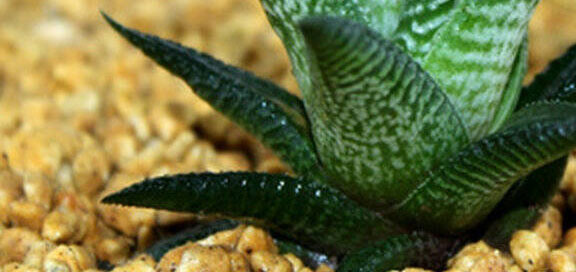
Bright, filtered light and ample airflow are recommended. The lack of sunlight can cause Haworthia Limifolia to etiolate and lose their vibrant colors.
Soil Care
Haworthia Limifolia plants need well-drained soil and can not stand waterlogged soils. Some commonly recommended options are a cactus mix or a succulent soil mix. Also a good potting mix for Haworthia Limifolia is made up of one part sand, one part peat moss, and half parts perlite or vermiculite.
Water Care
Haworthia Limifolia need to be watered when their soil is completely dried out and their leaves start to curl (about every two to three weeks). In the winter, Haworthia Limifolia need less water, so you can basically forget about them and just water them every other montHaworthia
Temperature and Humidity Care
Haworthia Limifolia like warmer temperatures in the summer but cool in the winter (down to 10°C). Haworthia Limifolia (F) doesn’t need any humidity. Haworthia Limifolia requires good ventilation, especially at night when they take in carbon dioxide for photosynthesis. Use a fan to keep air circulating so your Haworthia Limifolia can breathe.
Fertilizer Care
Feed sparingly with a weak fertilizer solution to promote plant growth Haworthia You can use an all-purpose fertilizer diluted to 50% of the recommended dose to feed your Haworthia Limifolia once at the beginning of the growing season (in the spring or fall).
Pruning Care
Pruning Haworthia Limifolia (Fairy Washboard) is not a common practice. This plant can be kept compact by pinching off the terminal growth before it becomes too leggy. The Haworthia Limifolia will grow more slowly but retain its shape in this way. To encourage denser foliage, cut an inch or so of top growth periodically to maintain at least two sets of leaves on each stem.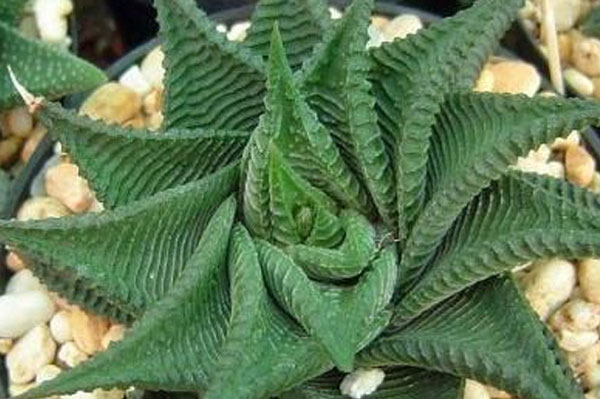
Haworthia margaritifera has warty white projections on the leaves.
Haworthia fasciata features horizontal white stripes and is sometimes called the zebra Haworthia.
Haworthia bolusii has "tufted" edges to the leaves.
Haworthia attenuata features long pointed green leaves.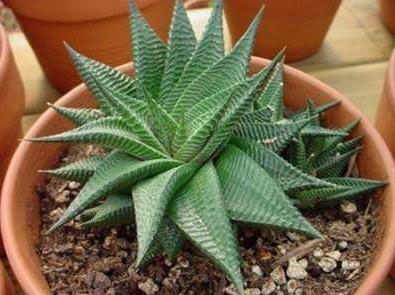
To avoid these, you must take precautions against the following:
Mealybugs
Mealybugs are small, soft-bodied plant sap-sucking bugs that resemble tiny pieces of cotton. Mealybugs can be controlled with a wide variety of pesticides, including horticultural oils that suffocate them.
Scale Insects
Scale insects also cause damage by sucking out fluids from plants while they produce honeydew, leading to sooty mold growth on leaves. Scale insects are best treated with contact pesticides such as horticultural oils or insecticidal soaps.
Whiteflies
Whiteflies are a type of insect that sucks juices. Lots of them do this at the same time, so they have a significant impact on Haworthia Limifolia plants. They secrete honeydew without causing any visible symptoms in most cases at first. However, honeydew attracts other insects and mites. This makes the Haworthia Limifolia more likely to be attacked by these pests. To control this type of bug, use neem oil which will suffocate the pests and stop feeding.
Haworthia Limifolia succulent plants are perfectly capable of contracting various diseases.The most common type is leaf rot which affects the leaves and stems, causing them to turn brown or even black sometimes. To prevent this from happening, you should water your Haworthia Limifolia in a way that keeps its roots dry as much as possible during nighttime hours when humidity is higHaworthia
It's also important not to overwater Haworthia Limifolia succulents since they have such shallow roots. This will help keep it away from fungal spores, which cause many types of plant disease, including leaf rot.
Haworthia Limifolia PictureHaworthia Limifolia InfoHaworthia Limifolia Native HabitsHaworthia Limifolia DistributionHow to Grow & Care for Haworthia LimifoliaHow to Grow Haworthia LimifoliaHow to Care for Haworthia LimifoliaHaworthia Limifolia UsesHaworthia Limifolia VarietiesHaworthia Limifolia Common Pests/Diseases
Haworthia Limifolia Picture

Haworthia Limifolia Info
| Scientific Name | Haworthia Limifolia |
| Common Name | Fairy Washboard |
| Estimated Plant Height | 15-25cm |
| Pot Dimensions | H9cm / W11cm |
| Preferred Location | Happiest in bright light |
| Temperature Range | 15-30C |
| Watering Requirements | A little water once a week |
| Hardiness | USDA Zone 9b to 11b: from 25 °F (−3.9 °C) to 50 °F (+10 °C) |
Haworthia Limifolia Native Habits
The haworthia limifolia (Fairy Washboard) plant, which is also known as the Haworthia Limifolia, is a small and beautiful succulent plant. The Haworthia limifolia is known for its unique leaves. Its leaves are unique because they are different from all other plants. The Haworthia Limifolia has dark green leaves that are thick. They have a round pointy end and round shape. These leaves have scale-like circles that surround the entire leaf. The common name of this plant also refers to the beautiful leaves of this plant. It is called the Fairies Washboard, because of its leaves that are shaped like the waterboard.Haworthia Limifolia is an easy-to-grow plant, and it can be planted anywhere outside its natural habitat. This adaptability of this plant makes it one of the most grown succulent plants. Thick leaves of the Haworthia Limifolia plant help it survive through the drought condition. Also, it can survive in partially low light (indoor condition) conditions as well. This makes the Haworthia Limifolia plant a very suitable choice for indoor decoration. It has a very small size, and you can keep it on your tables. It is a flowering succulent, which means it will produce tiny flowers during the blooming season. So, you will not just get a plant with beautiful leaves, but also a flowering plant.

Haworthia Limifolia Distribution
Haworthia Limifolia is a native to South Africa. This plant can survive in partially shady conditions. Haworthia Limifolia can grow even if the temperatures are higher in outdoor conditions. Haworthia Limifolia have developed several adaptations to survive in the harsh climate of their native land. This adaptability helps these plants survive outside their natural habitat. You can plant Haworthia Limifolia in indoor conditions as they can grow under the shade. You would need to make sure that you are following proper guidelines to grow this plant if you want to grow it outside its natural habitat.
How to Grow & Care for Haworthia Limifolia
How to Grow Haworthia Limifolia
Haworthia Limifolia Propagation with SeedsHaworthia Limifolia type is a slow grower so even if it can be propagated by its seeds, this method is not recommended. To propagate haworthia Limifoliafrom the seeds, plant the seeds in a well-draining soil mixture. This method can be used outdoors. In cooler areas, indoor propagating is recommended.
Haworthia Limifolia Propagation with Stem Cuttings
When propagating haworthia Limifolia from cuttings, cut a leaf from the mother plant carefully with a clean knife or scissors. Before replanting, wait for a few days to allow it to callous. Use well-draining soil for your new Haworthia Limifolia plant. Don’t forget to water when the soil dries out.
Haworthia Limifolia Propagation with Offsets
Haworthia Limifolia can be propagated at repotting time using offsets from the mother plant when it becomes crowded. When taking Haworthia Limifolia’s offsets, use a sharp knife or secateurs and cut as close to the mother stem as possible to including as many roots as possible, then allow the offset to dry briefly before re-potting it (similar to cuttings from other succulents). Pot the offsets in a small pot, using the same soil as the mother plant, put the Haworthia Limifolia in a warm, bright spot, and make sure to adequately water.

How to Care for Haworthia Limifolia
Light CareBright, filtered light and ample airflow are recommended. The lack of sunlight can cause Haworthia Limifolia to etiolate and lose their vibrant colors.
Soil Care
Haworthia Limifolia plants need well-drained soil and can not stand waterlogged soils. Some commonly recommended options are a cactus mix or a succulent soil mix. Also a good potting mix for Haworthia Limifolia is made up of one part sand, one part peat moss, and half parts perlite or vermiculite.
Water Care
Haworthia Limifolia need to be watered when their soil is completely dried out and their leaves start to curl (about every two to three weeks). In the winter, Haworthia Limifolia need less water, so you can basically forget about them and just water them every other montHaworthia
Temperature and Humidity Care
Haworthia Limifolia like warmer temperatures in the summer but cool in the winter (down to 10°C). Haworthia Limifolia (F) doesn’t need any humidity. Haworthia Limifolia requires good ventilation, especially at night when they take in carbon dioxide for photosynthesis. Use a fan to keep air circulating so your Haworthia Limifolia can breathe.
Fertilizer Care
Feed sparingly with a weak fertilizer solution to promote plant growth Haworthia You can use an all-purpose fertilizer diluted to 50% of the recommended dose to feed your Haworthia Limifolia once at the beginning of the growing season (in the spring or fall).
Pruning Care
Pruning Haworthia Limifolia (Fairy Washboard) is not a common practice. This plant can be kept compact by pinching off the terminal growth before it becomes too leggy. The Haworthia Limifolia will grow more slowly but retain its shape in this way. To encourage denser foliage, cut an inch or so of top growth periodically to maintain at least two sets of leaves on each stem.

Haworthia Limifolia Uses
The tiny Haworthia Limifolia grows easily indoors when placed near a window. Place it directly on a large window sill or on a desk or shelf near the window. In warmer regions, Haworthia Limifolia may be grown outdoors in a rock garden or succulent garden. Just remember that it is not frost tolerant.Haworthia Limifolia Varieties
There are more than 100 species of Haworthia, but their classification can be complex. The main difference among the common species is the size of the leaves and the orientation of the white markings on the leaves. In general, the best advice is to buy the most attractive variety to you based on leaf form and markings, as they all have similar cultural requirements. Some popular species include:Haworthia margaritifera has warty white projections on the leaves.
Haworthia fasciata features horizontal white stripes and is sometimes called the zebra Haworthia.
Haworthia bolusii has "tufted" edges to the leaves.
Haworthia attenuata features long pointed green leaves.

Haworthia Limifolia Common Pests/Diseases
The Haworthia Limifolia succulent can be prone to pests and diseases.To avoid these, you must take precautions against the following:
Mealybugs
Mealybugs are small, soft-bodied plant sap-sucking bugs that resemble tiny pieces of cotton. Mealybugs can be controlled with a wide variety of pesticides, including horticultural oils that suffocate them.
Scale Insects
Scale insects also cause damage by sucking out fluids from plants while they produce honeydew, leading to sooty mold growth on leaves. Scale insects are best treated with contact pesticides such as horticultural oils or insecticidal soaps.
Whiteflies
Whiteflies are a type of insect that sucks juices. Lots of them do this at the same time, so they have a significant impact on Haworthia Limifolia plants. They secrete honeydew without causing any visible symptoms in most cases at first. However, honeydew attracts other insects and mites. This makes the Haworthia Limifolia more likely to be attacked by these pests. To control this type of bug, use neem oil which will suffocate the pests and stop feeding.
Haworthia Limifolia succulent plants are perfectly capable of contracting various diseases.The most common type is leaf rot which affects the leaves and stems, causing them to turn brown or even black sometimes. To prevent this from happening, you should water your Haworthia Limifolia in a way that keeps its roots dry as much as possible during nighttime hours when humidity is higHaworthia
It's also important not to overwater Haworthia Limifolia succulents since they have such shallow roots. This will help keep it away from fungal spores, which cause many types of plant disease, including leaf rot.
Latest Updated
- Benefits of Bugleweed - 7 Science-backed Health Benefits
- Bugleweed Dangers & Side Effects - Is It Poisonous?
- How to Plant Evergreen Trees - What You Should Know
- When to Plant Evergreens - Grow Guide for Evergreen Trees
- 12 Wonderful Evergreen Shrubs for Your Garden
- 12 Popular Evergreen Plants with Pictures for Beginners
- When And How To Prune A Lilac Bush Like a Pro
- How to Grow & Care for Lilac Vine (Hardenbergia Violacea)
- Japanese Lilac Tree (Syringa Reticulata) Care & Propagation Guide
- Shumard Oak Pros and Cons - What to Know
Popular Articles
- Winter maintenance of Antirrhinum Majus
- How to Grow Terminalia Mantaly Tree
- How to Grow and Care for Crossostephium Chinense
- How to grow Antirrhinum Majus in spring
- Peristeria Elata (Dove Orchid) Profile: Info & Care Guide
- Underwatered Snake Plant (Sansevieria Trifasciata) - Signs And How To Fix
- How to Care for Brazilian Jasmine Plant (Mandevilla Sanderi)
- How to Grow & Care for Graptopetalum Purple Delight in Summer
- Rosa Chinensis (China Rose): Plant Growing & Care Tips
- How to Care for Baby Sun Rose (Aptenia Cordifolia)